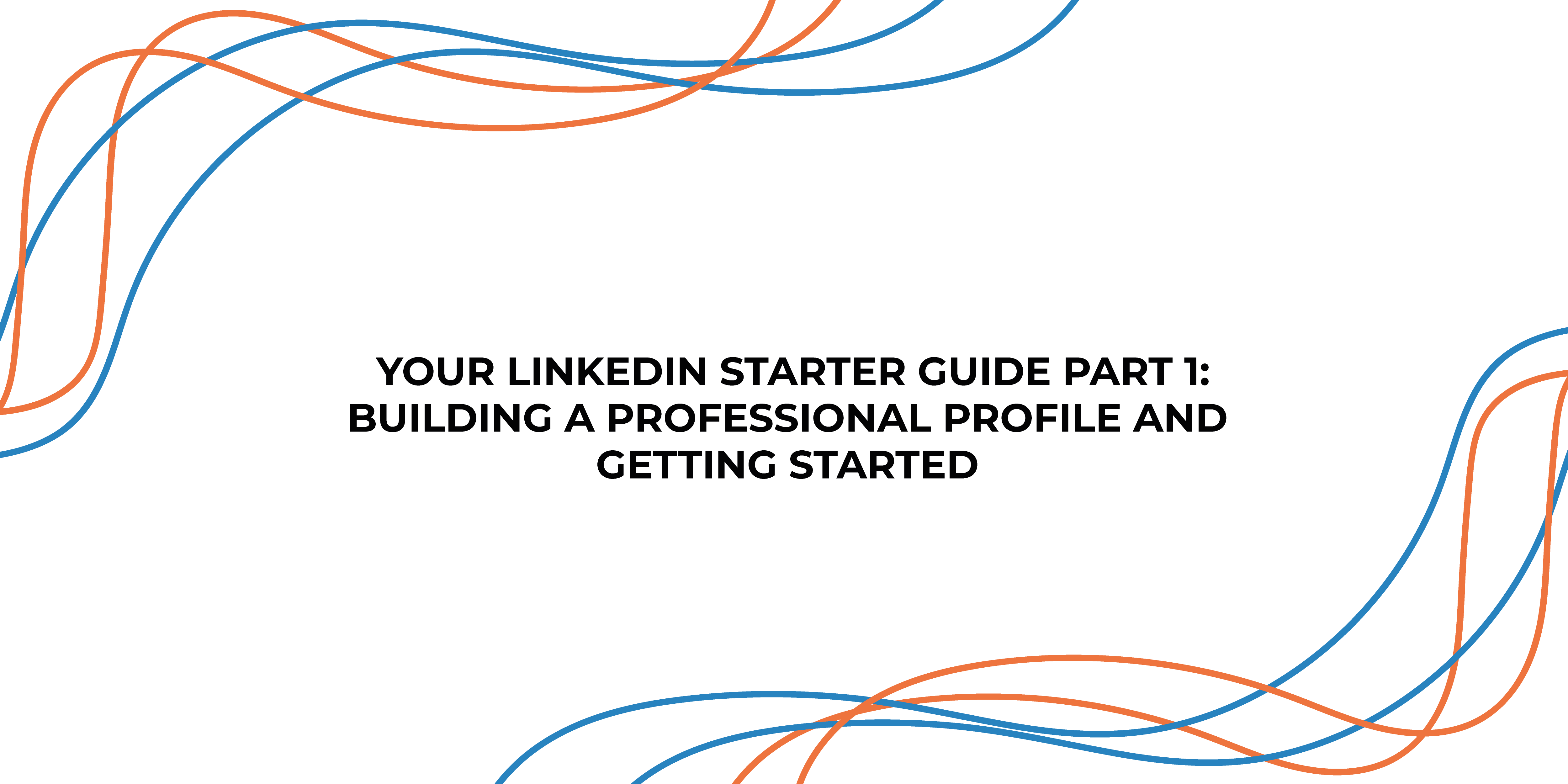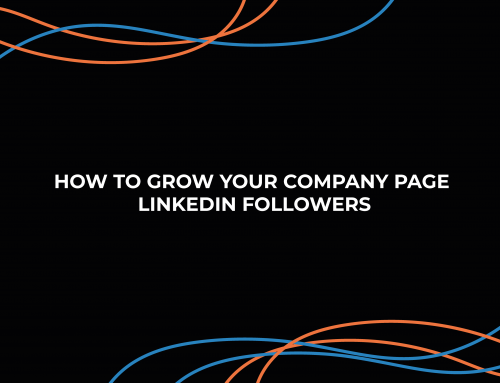LinkedIn has evolved beyond just being a social networking platform for graduates and business professionals looking for new job opportunities. It is a comprehensive ecosystem with people using it for career development, business growth, and, increasingly, personal branding. But where do you even start?
Today’s crash course will guide you through the key steps to building a LinkedIn profile that stands out so you can effectively showcase your professional achievements, connect with industry leaders, and maximise your online presence.
1. Creating a Strong LinkedIn Profile
It all starts with your LinkedIn profile, which serves as your digital business card and professional introduction to the world. Where do you even start?
1.1 Profile Picture
Your profile picture is your first opportunity to make a positive impression on LinkedIn. Choose a high-quality, professional-looking photo with good lighting and a clean background. This can make you look more professional and approachable. People should easily recognise you, so using a headshot where you are the central figure is generally recommended. A clear and welcoming profile picture can significantly increase your appeal and encourage others to engage with you.
1.2 Headline
The headline is the next important thing, providing a quick glimpse into your professional identity. You will want to write a concise and attention-grabbing headline that summarises your professional identity. Use keywords related to your skills, industry, or job role to improve your searchability on LinkedIn. An effective headline can pique the interest of potential connections, recruiters, and employers, drawing them further into your profile.
1.3 Summary
An effective headline can pique the interest of potential connections, recruiters, and employers, drawing them further into your profile. Use this space to highlight your key achievements, goals, and values, incorporating keywords throughout to improve your visibility in LinkedIn searches. A well-written summary can capture the attention of visitors and encourage them to explore the rest of your profile.
1.4 Experience
Your work experience section serves as a detailed record of your professional journey. Start with your current or most recent position and work backwards. When describing your roles, focus on your accomplishments and contributions. Use quantifiable metrics whenever possible to showcase your impact. Use action verbs and industry-specific keywords for optimisation.
1.5 Skills and Endorsements
Select and list skills that are relevant to your expertise and industry. These skills help LinkedIn users quickly understand your strengths and abilities. You can also ask colleagues and connections to endorse your skills, as a well-endorsed profile can boost your credibility. Having a strong skills section can also make you more discoverable when others search for professionals with specific expertise.
1.6 Education and Certifications
Including your educational background and relevant certifications adds depth to your professional narrative. It shows your commitment to continuous learning and can highlight your qualifications for specific roles or industries. It is important to make sure that you provide details about your degrees, institutions, and any noteworthy achievements or projects during your academic journey.
1.7 Recommendations
Seeking recommendations from colleagues, managers, or clients can provide valuable third-party validation of your skills and work ethic. A recommendation offers insights into your professional strengths and qualities from people who have worked closely with you. Positive recommendations can increase your credibility and trustworthiness on LinkedIn, making you more appealing to potential employers or business partners.
2. Building Your LinkedIn Network
Setting up your LinkedIn profile is just the first step. However, you can’t simply sit back and hope people will stumble upon your profile. To make progress, you must take a proactive approach and strategically begin expanding your LinkedIn network.
2.1 Connect Strategically
When it comes to expanding your LinkedIn network, it’s crucial to approach the process with a purpose in mind. Connecting strategically involves reaching out to individuals who can add value to your professional journey. This could include colleagues from your current or previous workplaces, classmates who share your educational background, friends who are involved in relevant industries, and professionals you look up to or admire.
Instead of sending generic requests, take a moment to write a message that explains why you’re interested in connecting. Mention any common interests, experiences, or goals you share. This not only increases the likelihood of your connection request being accepted but also starts the relationship on the right foot. Remember, it could be the beginning of a more meaningful and mutually beneficial relationship on LinkedIn.
2.2 Join and Participate in Groups
LinkedIn groups offer a valuable platform for networking and knowledge exchange. Finding and joining groups relevant to your industry, interests, or areas of expertise can be useful for expanding your network. These groups serve as virtual meeting places where professionals discuss relevant topics, share insights, and exchange ideas.
Active participation in group discussions is key to building your reputation as an engaged professional. Share your expertise, offer insights, and contribute to conversations in a constructive and meaningful way. By consistently participating and providing value to the group, you can establish yourself as a knowledgeable and trustworthy member of your professional community.
2.3 Follow Influencers and Companies
Staying informed about the latest trends, developments, and thought leadership is essential. This is where following influential figures and companies in your field comes into play. Thought leaders and organisations often share valuable insights, industry news, and best practices on their LinkedIn profiles.
By following these influencers and companies, you gain access to a constant stream of relevant information. Engaging with their content by liking, commenting, and sharing demonstrates your active interest in the industry. This not only keeps you well-informed but also increases your visibility within your network. It can lead to meaningful interactions with professionals who share your interests and may open doors to new opportunities.
3. Getting Active on LinkedIn
Put yourself in your connection’s shoes. Why would you want to connect with someone who doesn’t post any content or engage on LinkedIn? This is why it is so important to be active on the social media platform.
3.1 Share Valuable Content
When you regularly post relevant articles, industry insights, or your own perspectives on LinkedIn, you accomplish several critical objectives. First and foremost, you establish yourself as a thought leader in your industry. By consistently offering valuable information and insights, you demonstrate your expertise and authority, making you a go-to source for industry knowledge.
Whatsmore, sharing content ensures your presence in your network’s newsfeeds. LinkedIn’s algorithm prioritises content creators, so when you consistently post, your updates are more likely to appear in your connections’ feeds. This visibility not only keeps you top-of-mind within your network but also attracts potential connections and followers who are interested in your subject matter.
3.2 Engage with Others
Interacting with others on LinkedIn is not just about passively scrolling through your feed. It involves actively engaging with the content shared by your connections and followers. By commenting on their posts, you initiate meaningful conversations and showcase your interest in their work. Liking updates is a simple yet effective way to acknowledge and support your network.
Sharing content that adds value is equally important. When you share someone else’s post, it signals your appreciation for their content and extends its reach to your own network. This reciprocal engagement fosters a sense of community and strengthens your professional relationships.
Active engagement, such as commenting, liking, and sharing, has a direct impact on your visibility. LinkedIn’s algorithm rewards engagement, so the more you engage with others, the more likely a wider audience will see your own content. This, in turn, can lead to increased connections and networking opportunities.
3.3 Utilise LinkedIn’s Features
LinkedIn offers a variety of features beyond basic posting and networking. Exploring these features can significantly enhance your professional presence:
- LinkedIn Articles: Writing and publishing long-form articles on LinkedIn allows you to dive deeper into industry topics or share comprehensive insights. Articles are a powerful way to showcase your expertise and establish yourself as an authority in your field.
- Polls: Creating and participating in polls can spark engaging discussions within your network. It’s a fun and interactive way to gather opinions, share valuable data, and gain insights from your connections.
- Events: Hosting or participating in LinkedIn events, whether they’re virtual or in-person, can help you connect with like-minded professionals and expand your network. It’s an excellent platform for sharing knowledge, collaborating, and building relationships in a focused environment.
By using these LinkedIn features effectively, you can differentiate yourself from others in your field and demonstrate your commitment to staying current and engaged within your professional community. This proactive approach will not only strengthen your online presence but also lead to meaningful interactions and opportunities in your industry.
Round Up
A strong LinkedIn profile is the foundation for successful networking and career advancement. By paying attention to the details of your profile, strategically expanding your network, and actively participating in the LinkedIn community, you can unlock the platform’s full potential.
In part 2 of this Starter Guide in LinkedIn series, we will delve into advanced strategies for leveraging LinkedIn for business development and personal branding. Stay tuned for more insights and tips to make the most out of your LinkedIn experience.





